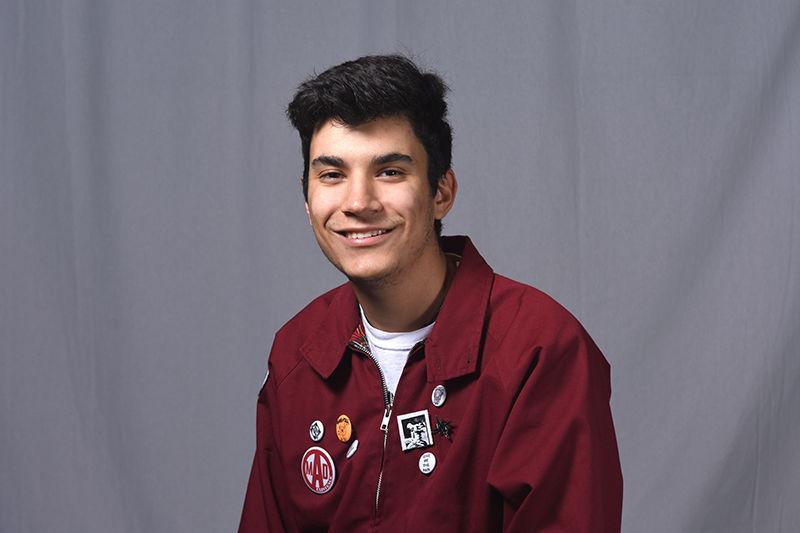
Aaron Sanchez
Aaron Sanchez
During spring break, I was out having dinner with my family when I came up on a conversation with my 14-year-old brother about what gender is. I surveyed him with the following questions: “What’s the difference between perfume and cologne? What makes them manly or not?” “What about me makes me a male?” He looked confused.
“Uh … it’s — it’s, well, perfume just smells … girly, I guess. And uh, you’re a guy,” he uttered.
“No, really,” I replied. “Besides thinking about my biologically male anatomy, what makes me a male?
He shrugged.
I responded to the gesture by explaining to him the performativity of gender — how masculinity is something expressed like a performance. I grow my facial hair, I wear clothes from men’s section, I cut my hair short, I don’t shave my legs and countless other traditionally “guy” things.
“You’re telling him what?”was the response from my mother at the table to what I told my brother, and that goes to show how deeply embedded these traditional conceptions about gender are.
The talk we were having was started when my brother brought up some tasteless meme of a joke about transgender people, which made me realize my brother didn’t really understand sex and gender. Talking about the performativity of gender helps to create dialogue like I did in understanding that sex and gender are not in one the same, and can be separated as such.
Sometimes it’s a hard thing to take in when it challenges perspectives that we’ve held all our lives, but it’s a matter of overcoming fear of the unknown and branching out as a learner and citizen in this diverse nation.
I believe having this conversation on our campuses allows students to become socially and culturally competent, as well as knowledgeable of gender diversity across our campuses.
In March, the Language Diversity Ambassadors at NC State held an event at Caldwell Hall titled “Gendered Language: Myths and Marvels in 5 Minutes or Less,” where graduate student linguists had short but meaningful presentations examining gender and language in many facets of our lives.
The presentation I saw on discourse and masculinity brought me back to the conversation that I’d had with my brother, since it was about how masculinity is not just expressed through appearance, but through language too.
The word “dude” is something most American men can’t remember learning but have had in their vocabulary for as long as they could remember. The presentation highlighted how the usage of “dude” was an effective form of masculine expression. An example is, “You got a problem, dude?” where in this sentence, the word shows it’s tough, confrontational use that an ideal man would brandish. The common “I was with the dudes” or “All the dudes and I are going” especially enforces masculinity because it suggests homosociality, because we know that men aren’t really men unless they’re hanging out with other men. If they only hung out with girls, they may not be as “manly” as society thinks. An important point was that the usage of “dude” also suggests heterosexuality, which has mistakenly been attributed to alluding strictly to masculinity. That’s a part of the societal view that you wouldn’t assume that a male is attracted to other males if they’re using masculine vocabulary.
This interesting intersection of language and gender in masculinity is worthy of a conversation among males across campus as we strive to reach the simple goal of having an inclusive educational space where anyone and everyone’s gender identity is welcome and respected.